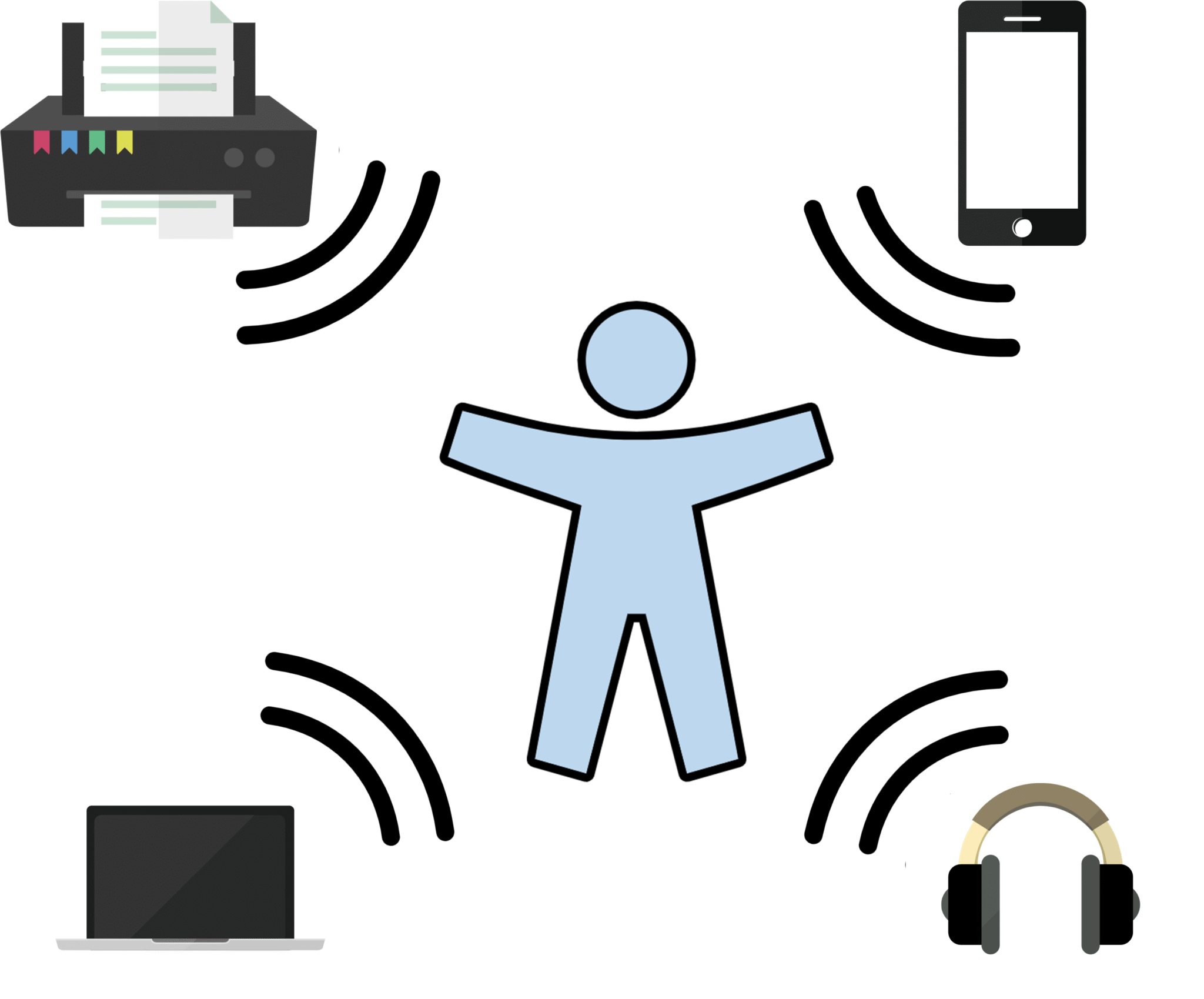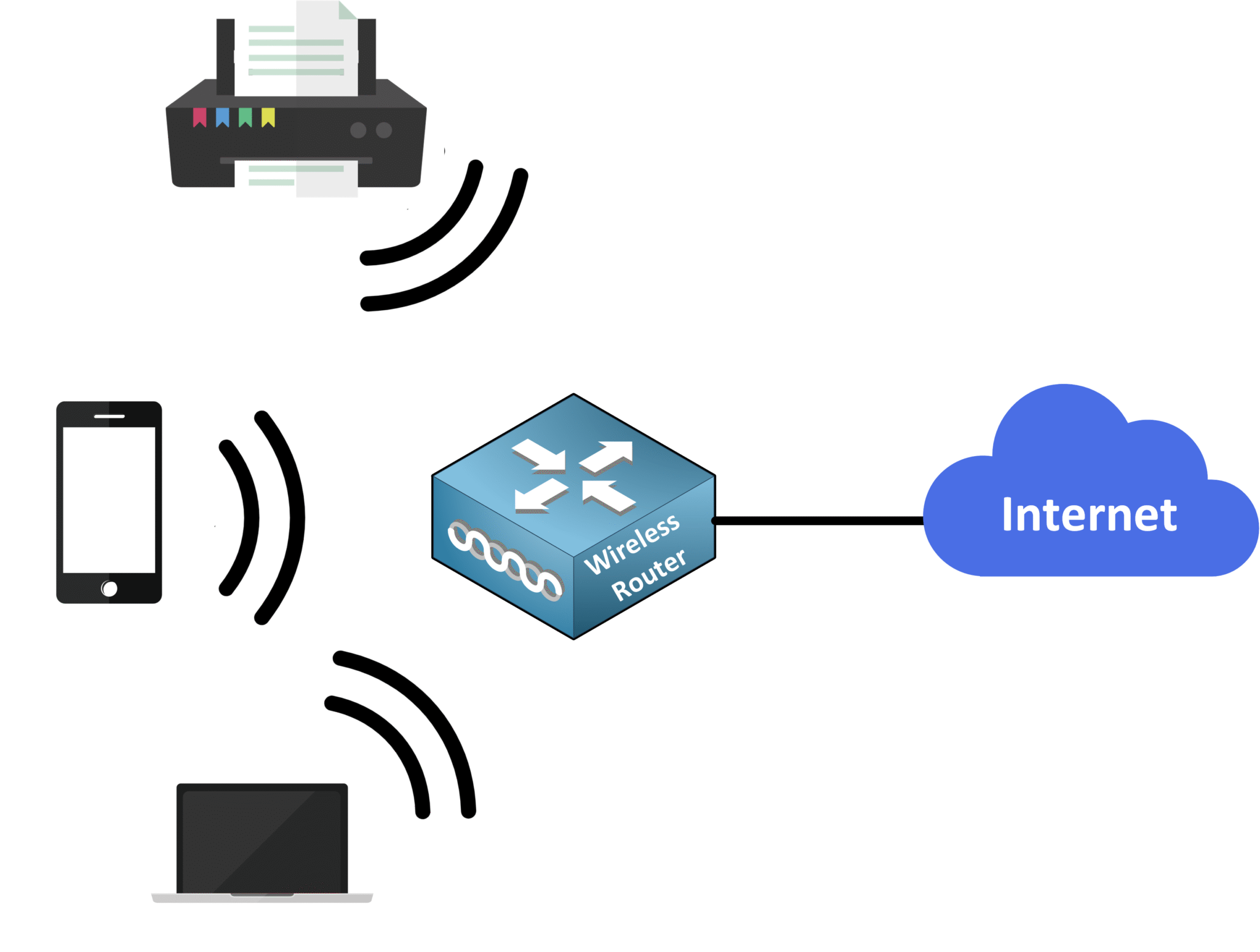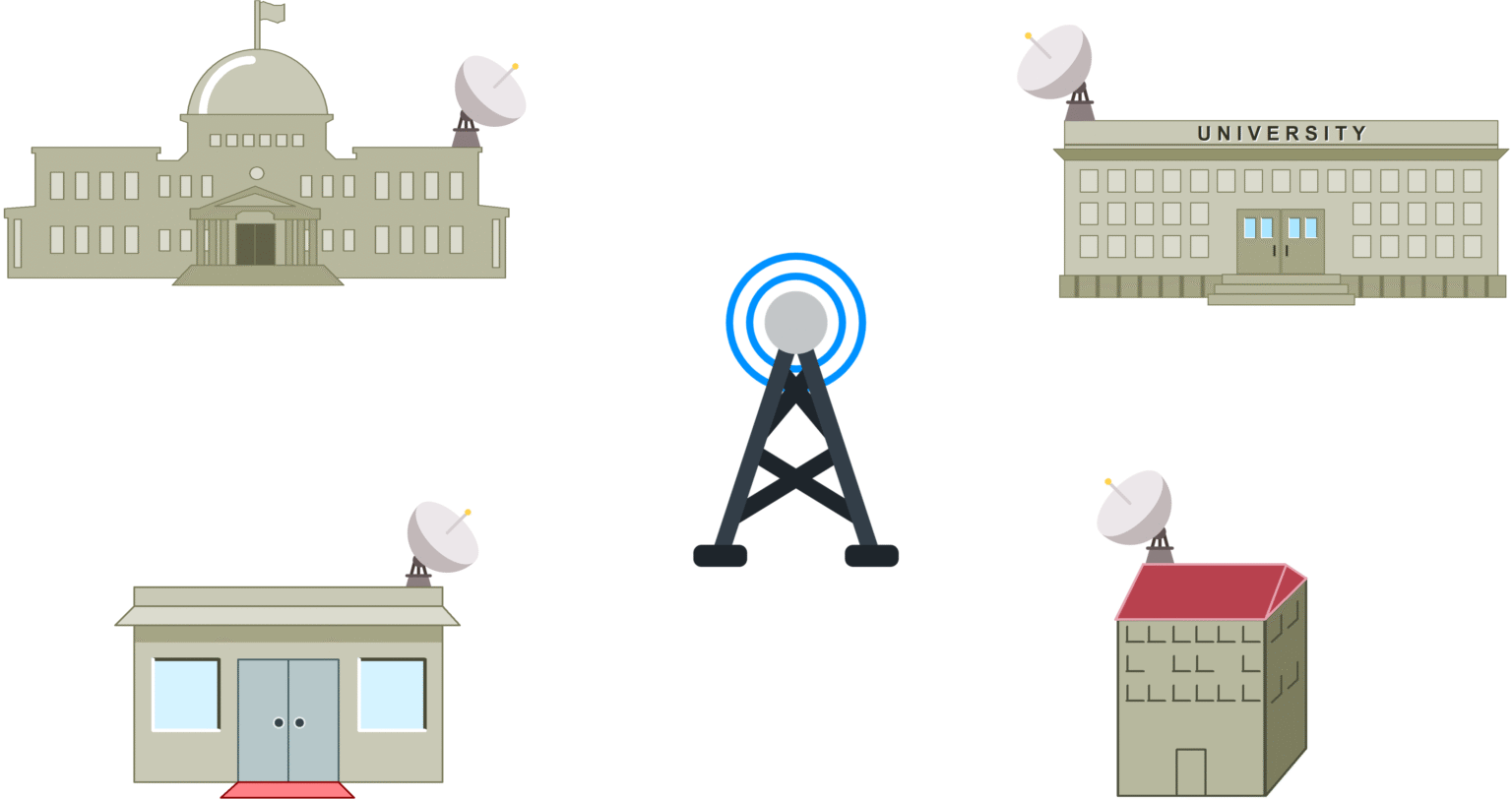Imagine you're moving in your city and meanwhile sending a message to a friend from your smartphone. You’re using wireless communication, sending data over the air with radio waves instead of physical cables.

Figure 1 – Wireless network concept
This freedom to connect without wires has become such a normal part of life that we rarely think about how it works. But today, we’re diving into it to help you master the essentials for the CCNA.
Here’s why wireless networks are so convenient:
Mobility: You can move freely within the coverage area of your home for example and stay connected.
Scalability: Adding new devices is easy no need for extra cables.
Cost-effective: Large spaces don’t need expensive wiring.
But did you know there are different types of wireless networks, each serving a specific purpose? Let’s explore them together.
Answer the question below
Let’s take a look at the different types of wireless networks based on their range and application. You might recognize some of these in your daily life!
Wireless Personal Area Network (WPAN)
A Wireless Personal Area Network (WPAN) is designed for short-range communication, typically just a few meters (10 meters or less). This type of network can use technologies like Bluetooth to interconnect devices.
Purpose: Quick, short-range connections for personal use.

Figure 2 – Wireless Personal Area Network (WPAN)
Examples:
Connecting your smartphone to Bluetooth earbuds.
Sending files to a printer wirelessly.
Streaming music to a speaker.
Pairing a laptop with a wireless mouse.
Wireless Local Area Network (WLAN)
A Wireless Local Area Network (WLAN) provides wireless connectivity over a larger range, typically up to 100 meters indoors. WLANs are commonly used in homes and offices to allow multiple devices to share a single internet connection.
Purpose: Connects multiple devices within a limited area (home or office).
Example: Your home Wi-Fi network based on IEEE 802.11 standards.
Use Case: When you connect your laptop or smartphone to your home Wi-Fi, you’re using a WLAN.

Figure 3 – Wireless Local Area Network (WLAN)
Wireless Metropolitan Area Network (WMAN)
A Wireless Metropolitan Area Network (WMAN) spans several kilometers and provides connectivity across large areas, such as entire cities.
Purpose: City-wide wireless connectivity.
Example: WiMAX (Worldwide Interoperability for Microwave Access).
Use Case: Public Wi-Fi hotspots in parks, libraries, or transportation hubs.

Figure 4 – Wireless Metropolitan Area Network (WMAN)
Wireless Wide Area Network (WWAN)
A Wireless Wide Area Network (WWAN) covers vast distances, from entire cities to countries, using cellular networks and satellite communications.
Purpose: Provides internet access over long distances.
Examples: Cellular networks (4G, 5G) and satellite-based internet.

Figure 5 – Wireless Wide Area Network (WWAN)
40 % Complete: you’re making great progress
Unlock the rest of this lesson
If you’d like to continue your CCNA journey, simply create your free account.
Access all CCNA lessons
Practice with hands-on labs
Train with Practice exams and Quizzes
Progress tracking in your dashboard
Made by network engineers - CCNP certified
learners globally
Introduction to Wireless Networks
A wireless network enables devices to connect using radio waves, offering mobility and flexibility without cables. This lesson covers the main types, IEEE 802.11 standards, and key organizations behind Wi-Fi interoperability.